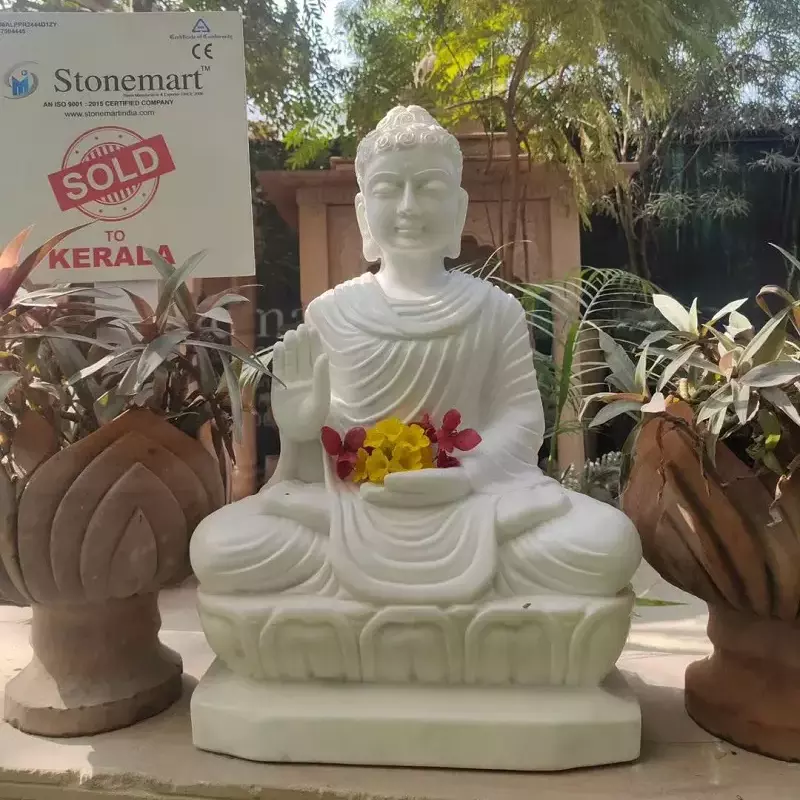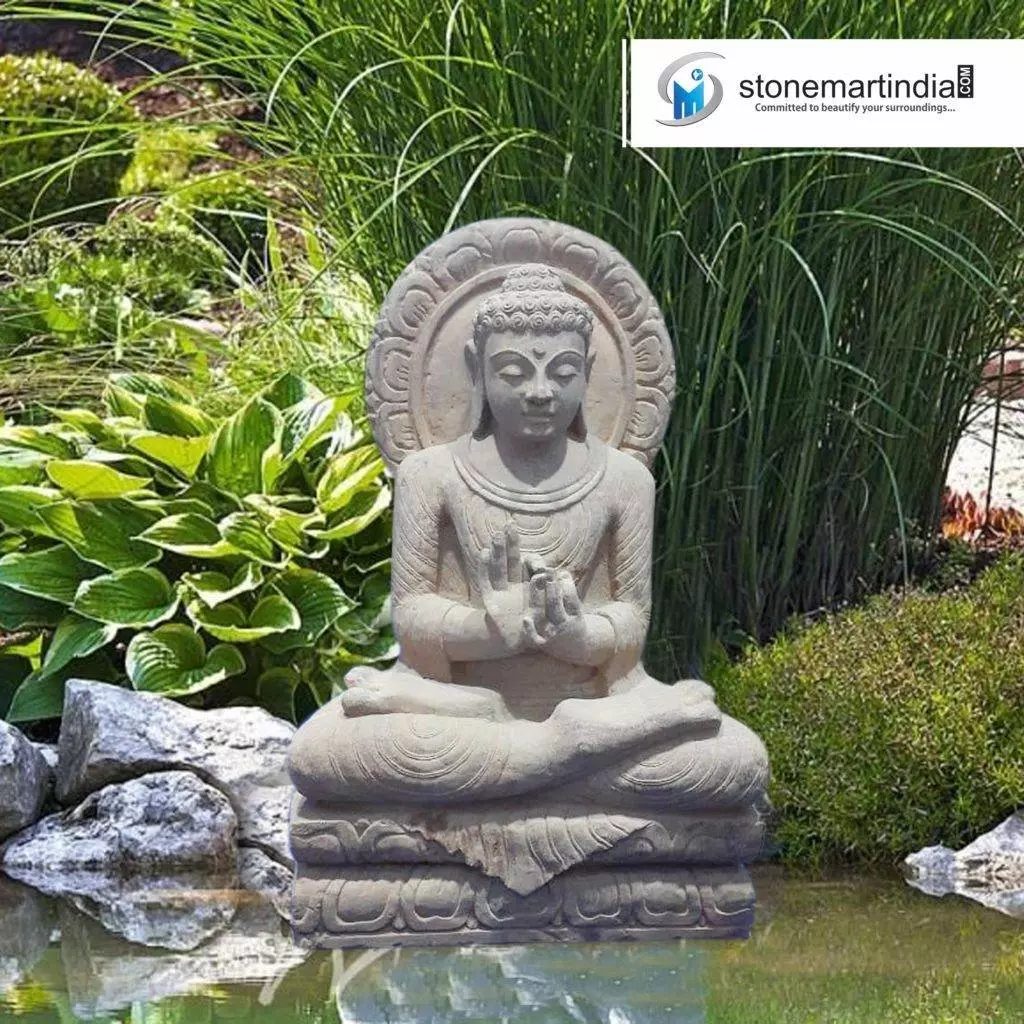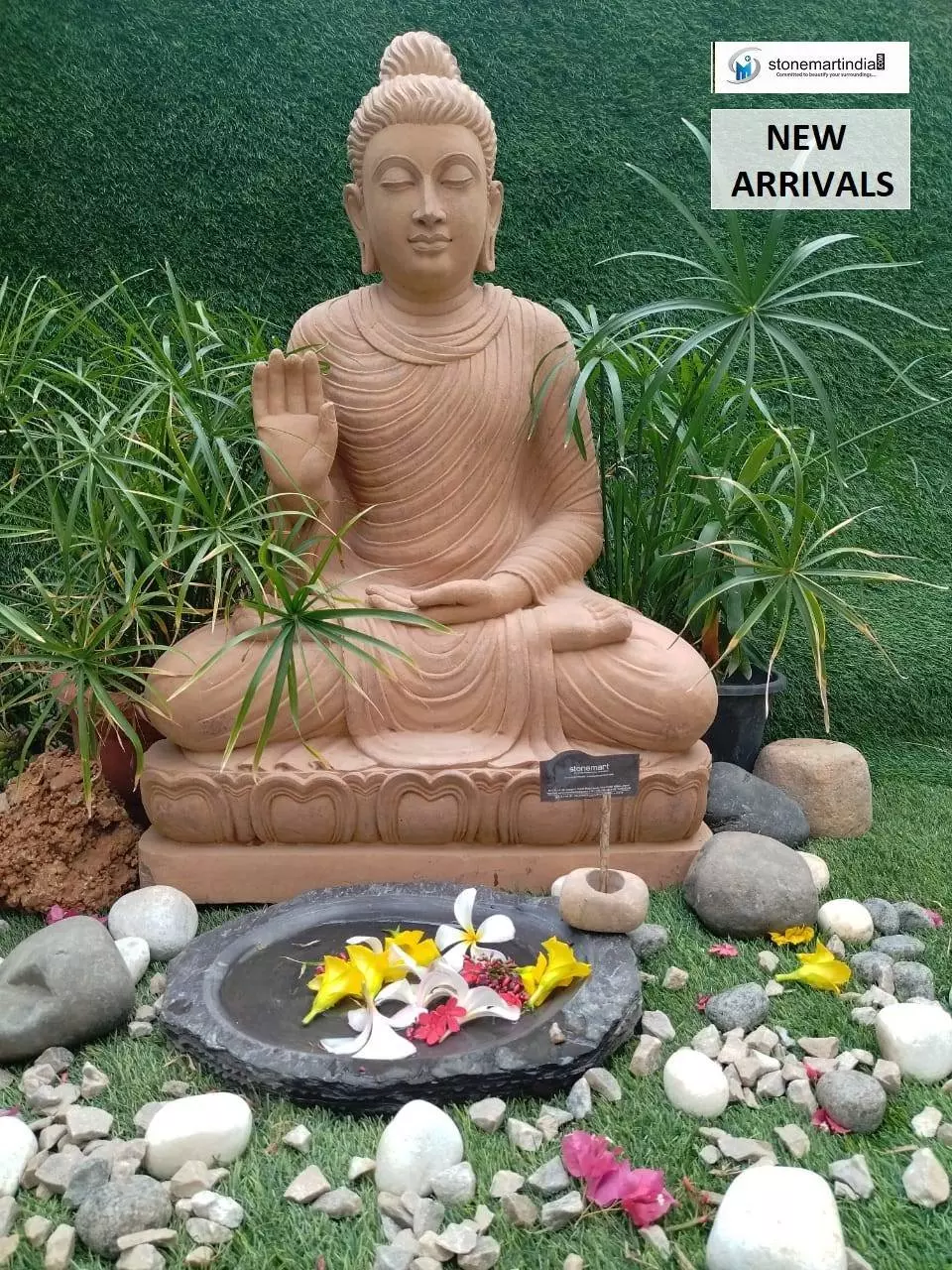What is the Difference Between a Dharmachakra Mudra Buddha and an Abhaya Mudra Buddha Statue?

Dharmachakra mudra Buddha and abhaya mudra Buddha are among the widely popular and recognizable Buddha statues around the globe. Both the Buddhas are good for your residential and commercial properties, but they look different, they appear different and they function different as well. Here, to help you avail better insight about the basic and key distinctions between the two mudras portrayed by the Buddha, let us classify both these mudras and dissect them based upon various yardsticks.
We are going to classify dharmachakra mudra Buddha statues and abhay mudra Buddha statues on the grounds of their origin, appearance, their Vastu and Feng Shui influence and where and how to place them to earn maximum benefits. At the end, we will help you know where can you purchase 100% trusted natural stone Buddha sculpture online with absolute assurance of the right deal.

MUST READ: Top 10 Decor Ideas for your Dream Luxury Villa in 2024
So, let us segregate these distinctions in the mudras through the table that has been drawn below -
| Criterion | Dharmachakra Mudra Buddha Statue | Abhaya Mudra Buddha Statue |
|---|---|---|
| Origin | Originated in one of the first sermons at Sarnath where the Buddha demonstrated the Wheel of Dharma and how its rotation is meant to uplift the mankind. | The Buddha made this gesture to placate a mad elephant named Nalagiri raging towards him as part of the plot to kill him. The abhaya mudra of the Buddha immediately assuaged the elephant and came under the refuge of the Buddha. |
| Appearance | Generally, a sitting mudra of the Buddha with a moving wheel or chakra of dharma demonstrated with the thumbs and index fingers of both the hands. The 3 extended fingers of the right hand symbolize the hearers, the realizers and the great vehicle or the Mahayana. The 3 extended fingers of the left hand symbolize the three jewels of Buddhism, which are the Buddha, the Dharma and the Sangha. | The right hand is kept upright in a blessing gesture with the height closer to the chest level. The cup of the right hand palm is curved and slightly tilted outward. The left hand during this mudra is neatly placed on the lap. The expressions on the face of the Buddha are absolutely that of confidence and fearlessness. |
| Vastu and Feng Shui Effects | The Dharma chakra mudra functions as the portal of your connection with the cosmic energy. It matches and lengthens the physical posture altogether with the chakras. Practicing the mudra on a daily basis as an integral segment of meditation inflows peace and happiness by warding off negative feelings such as stress, depression, tension and anxiety from our lives. | The raised right hand of the Buddha shields the bearer and his or her property from evil spirits, negative energies and misfortune. |
| Placement | Place the ordered dharmachakra Buddha idol in the northeast corner or east of your home to stimulate the energy of the corner in a positive sense across the property. | Keep the blessing Buddha statue facing East at or near the entrance. The mudra helps develop confidence and transforms the bearer into a fearless individual to face all kinds of uncertainties that hover in life. |
MUST READ: Top 10 Decor Ideas for Commercial Establishments in 2024

An in-depth study of the differences between a dharmachakra Buddha statue and an abhaya Buddha statue would help you make the right choice regarding bringing home the correct Buddha statue. Always go for Buddha sculptures that are hand carved from original natural stone blocks. As natural stone statues do not carry impurities, they amplify their Vastu and Feng Shui influence. Shop from an exclusive range of Buddha fountains, white marble Buddha statues, black marble Buddha statues, and sandstone Buddha statues in any of the above classified mudras.
You can conveniently place the order for 5 feet Buddha statue, 4 feet Buddha statue, 3 feet Buddha statue to 2 feet Buddha statue and get the door delivery of 100% genuine ISO 9001:2015 and CE Certified collection of the Gautam Buddha statues. Visit Stonemart™ India and witness from own eyes what our local Indian artisans have accomplished for you. Time to seek the refuge and patronage under the blessings and greatness of the Buddha.
